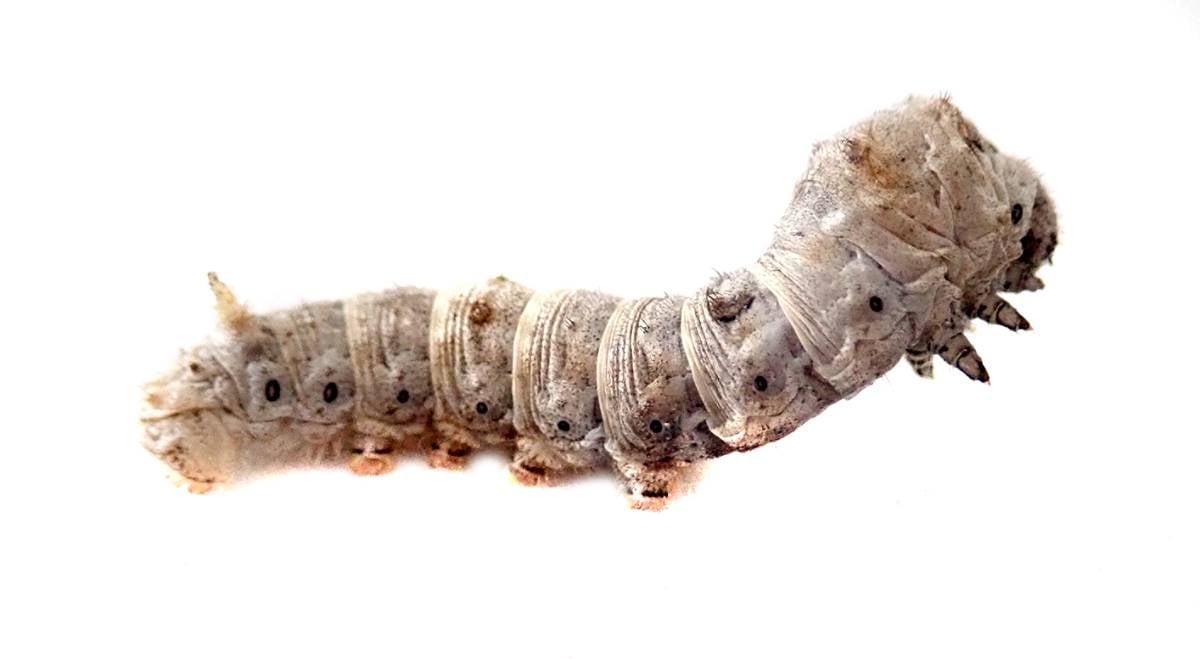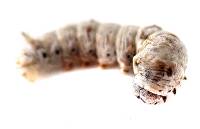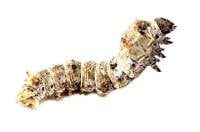Josh's Frogs
Silkworm Care and Feeding

Silkworms are larva of the moth Bombyx mori. Used for centuries to produce silk, these caterpillars are surprisingly nutritious, as they are low in fat, relatively high in calcium, contain a significant amount of protein, and are very high in trace elements and B vitamins. Their soft outer covering means they are also easily digestible, and their movement speed and motion makes them appealing targets for any insectivorous reptiles or amphibians. Due to these characteristics, silkworms make a great addition to your feeding regime. Best of all, these are not another treat insect - silkworms have what it takes to be a staple feeder insect for your pet's diet!
These worms are great feeders for bearded dragons, leopard geckos, water dragons, chameleons, Pac Man frogs, and many other insectivorous reptiles and amphibians.
What makes silkworms so great?
- Low Fat
- High Protein - 5 x more than superworms or mealworms, 3 x more than crickets
- High in trace elements and B vitamins
- Easy to Digest
- Easy to care for, long lived
Housing
Silkworms are also easy to care for and long lived if kept appropriately. Make sure the food does not dry out, or else they will not be able to consume it. A small spray of water can help keep humidity up, but do not allow silkworms to come in contact with standing water. Silkworms eat mulberry leaves or a prepared diet that is mulberry based. Periodically remove silkworm waste as it builds up in the container. Their waste looks like small, dark balls.
At room temperature, they will grow approximately 1/4"" a week. At higher temps (we keep them at 80F), they can grow up to 1/2"" a week. We provide enough food in their 8 oz deli containers to grow the silkworms to approximately 1.5"" in length. The cooler you keep your worms, the slower they will grow and the longer they will live, as long as their food does not dry out or mold. Temperatures below 60F or above 90F will result in a low rate of survival.
Feeding
Silkworms can be tong or bowl fed, or allowed to wander in the habitat for a short time before they are eaten. These larva are rather clumsy, making bowl feeding very effective. Silkworms are raised on a highly nutritious food - There's no need to worry about gutloading, as they'll have eaten a quality meal minutes before consumption anyway! As long as you are dusting other feeder insects, I would recommend against dusting silkworms. Their smooth exterior does not retain powders well. Instead, make sure to dust other feeder insects fed to your herp.
At Josh's Frogs, our silkworms are hatched at our facility, and then raised up on a mulberry-based artificial diet, ensuring they get all the nutrients they need to grow (and become healthy snacks for your pet!). They are then repackaged with fresh food before being shipped out. This ensures the worms will survive for 2 weeks when kept at the proper temperature and humidity.
Links of Interest:



